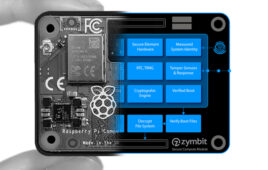To save money implementing a machine vision system for quality assurance (QA), it can be simple. Here Zohar Kantor, VP Sales & Project Management of Autonomous Machine Vision Inspekto, compares the costs of traditional and Autonomous Machine Vision.
Machine vision has always been a necessary evil. While manufacturers require visual QA to detect defective products, it is an expensive, complex and expert-dependent process.
The cost of traditional machine vision
Once the manufacturer has decided to implement visual QA at any point on the production line, they require a systems integrator to build a tailored solution. Because of the associated costs, industrial QA managers must consider each point in the production line to decide whether the investment is justified
The systems integrator will create Proof of Concepts, develop a possible solution, test it, optimize it, and eventually come up with an installation. The integrator must purchase the necessary components at expense to the manufacturer, including cameras, lenses, lighting, housing and communication and more. Assuming a solution is applicable to the targeted point on the production line, the integrator then builds it.
Not only is the manufacturer charged for the professional services of an integrator, but there are additional costs of wait-time till the solution is ready, and of downtime while it is installed, tested and commissioned. For a single inspection task on a pre-defined product, the manufacturer is typically faced with a bill in the range of €20,000 to €150,000.
As well as the capital expenditure to get a system up and running, the manufacturer should consider operational expenditure. If there is an environmental change in the plant, or the manufacturing line is modified, the manufacturer will have to call on the systems integrator to adjust or redesign the system–usually after defects have gone unnoticed for some time. Re-usage of the solution at any other point in the plant is usually out of the question.
These costs, combined with the solution’s complexity and long timelines for implementation, means that for many manufacturers it is possible to implement visual QA solutions only at major junctions on a production line in most cases end-of-line inspections, which increases scrap levels and reduces productivity and yield. As one plant manager put it–the end-of-line visual QA test protects the customer, while the many inline visual QA tests protect the plant.
The tides are turning
Autonomous Machine Vision technology offers manufacturers a cost-effective alternative. By opting for a small, standalone, self-learning system that can be installed in minutes by the manufacturer’s own personnel, the manufacturer can cut costs in testing professional services and hardware by 90 percent.
Autonomous Machine Vision systems can be installed in minutes or hours. This reduction in time and cost means that manufacturers can implement the system at any point on the production line, enabling Total QA, where visual quality assurance is universal upon the production line. Even better, a self-learning system can be easily and independently moved from one point on the production line to another and self-adjust to a new environment or to new products.
On top of that, Autonomous Machine Vision impacts the whole manufacturing paradigm, ensuring every step on the production line complies with specification, while disposing of scrap components before they’re combined with good components to make a defective product.
Filed Under: Product design




